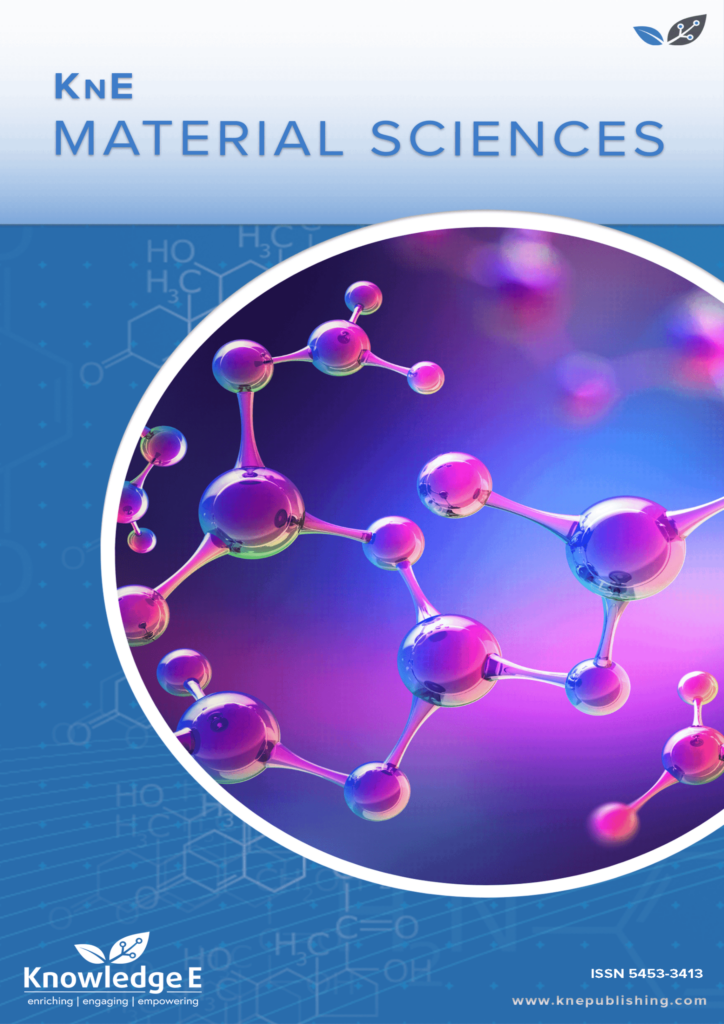
KnE Materials Science
ISSN: 2519-1438
The latest conference proceedings on physical materials, energy materials, electrical materials.
Effect of Pre-Hydrolysis Reaction Conditions on Xylooligosaccharides Extraction in Eucalyptus Globulus
Published date: Aug 10 2022
Journal Title: KnE Materials Science
Issue title: 1st International FibEnTech Congress (FibEnTech21) – New Opportunities for Fibrous Materials in the Ecological Transition
Pages: 8–14
Authors:
Abstract:
Pre-hydrolysis-kraft of Eucalyptus globulus by autohydrolysis (batch) and with dilute acid hydrolysis (flow-through reactor) were explored in this study, to examine the recovery of xylooligosaccharides (XOs) from the pre-hydrolysis treatment. The results of this work support the potential reuse of the hydrolysate to increase the recovery yield of added value compounds. The pH of the dilute acid hydrolysis was maintained at 3.5 with acetic acid, to mimic the conditions of the batch reactor medium (autohydrolysis). An increase of XOs recovered was evident when the pre-treatment was in the flow-through reactor instead of the batch reactor. In the latter, a high concentration of furfural was recovered, showing the influence of time in XO conversion through hydrolysis. The total yield of pulp was higher in the flow-through reactor (36.4%) in comparison with the batch system (34.5%) after kraft pulping, which was expected, given the increasing time that the hydrolysate was present in the reactor; however, the difference was small and could have been the result of precipitated compounds in the latter, so this needs further analysis.
Keywords: cellulose, Eucalyptus globulus, pre-hydrolysis kraft, xylooligosaccharides
References:
[1] Ahlbom A. Kraft cooking of Eucalyptus urograndis. An investigation of the delignification kinetics of eucalyptus wood [Master’s thesis]. Sweden: Chalmers University of Technology; 2018. Available from: https://hdl.handle.net/20.500.12380/255573
[2] Gladyshko Y. Extraction of hemicelluloses by acid catalyzed hydrolysis [Bachelor’s thesis]. Finland: Saimia University of Applied Sciences Technology; 2011.
[3] Wu C. Dissolving pulp process as recovery source of xylooligosaccharide - A minireview. BioResources. 2016;11(3):7917–7927.
[4] Borrega M, Sixta H. Purification of cellulosic pulp by hot water extraction. Cellulose. 2013;20(6):2803–2812. https://doi.org/10.1007/s10570-013-0086-1
[5] Neiva D, Fernandes L, Araújo S, Lourenço A, Gominho J, Simões R, Pereira H. Chemical composition and kraft pulping potential of 12 eucalypt species. Industrial Crops and Products. 2015; 66:30–30. https://doi.org/10.1016/j.indcrop.2014.12.016
[6] Singh RD, Muir J, Arora A. Concentration of xylooligosaccharides with a low degree of polymerization using membranes and their effect on bacterial fermentation. Biofuels, Bioprod. Biorefining. 2021;15(1):61–73. https://doi.org/10.1002/bbb.2145
[7] Ding XM, Li DD, Bai SP et al. Effect of dietary xylooligosaccharides on intestinal characteristics, gut microbiota, cecal short-chain fatty acids, and plasma immune parameters of laying hens. Poultry Science. 2018;97(3):874–881. https://doi.org/10.3382/ps/pex372
[8] Henriques P, Martinho M, de L Serrano M, de Sousa APM, Alves AMB. Xylooligosaccharides production by acid hydrolysis of an alkaline extraction filtrate from Eucalyptus globulus bleached kraft pulp. Industrial Crops and Products. 2021;159 :1–7. https://doi.org/10.1016/j.indcrop.2020.113066
[9] Grootaert C, Verstraete W, de Wiele TV. Microbial metabolism and prebiotic potency of arabinoxylan oligosaccharides in the human intestine. Trends in Food Science and Technology. 2007;18(2):64–71. https://doi.org/10.1016/j.tifs.2006.08.004